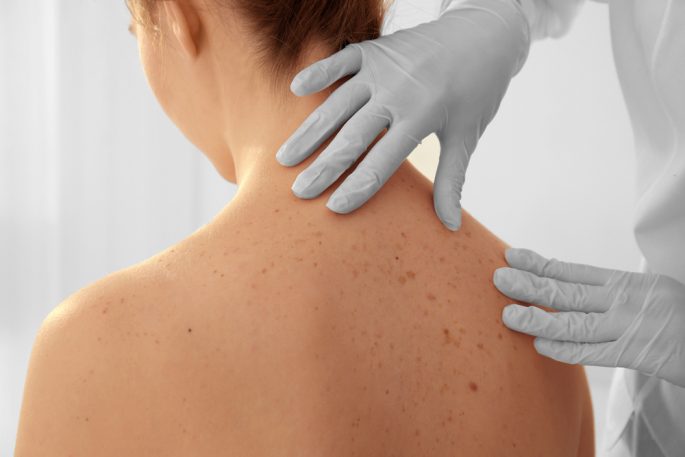Skin cancers are mutations in the DNA of the skin cells caused by UV rays from tanning beds and sunlight. There are three major types of skin cancer: melanoma, basal cell carcinoma, and squamous cell carcinoma. Actinic keratoses are considered precancerous because 10% of untreated cases develop into squamous. Skin biopsies are used to diagnose cancer and treatment options are determined by type, stage, and location of skin cancer.
Mohs Surgery
During Mohs surgery, growths are removed layer by layer and examined until healthy skin cells are left. The layers are examined while the patient waits, so the surgery is done in one sitting. This treatment spares healthy cells with little cosmetic impact by removing cancerous cells more deliberately. It is used to treat basal cell carcinoma and melanoma skin cancers commonly found in more visible areas of the body.
Electrodicession and Curettage (EDC)
A quick procedure, EDC is used to treat shallow skin cancers such as superficial basal and squamous cell carcinoma by using a spoon-shaped blade, a curette, to remove cancerous skin cells. Remaining cancer cells are then burnt with an electric needle. Commonly called a scrape and burn, the combination of the curette and an electrocautery device removes cancerous cells quickly.
Surgical Excision
With surgical excision, the cancerous cells and some of the surrounding healthy skin are removed. This is a quick procedure where the doctor marks the area around the growths or lesions and then cuts them away to help prevent spreading. This treatment is used to completely remove cancer cells. Excision is used to treat melanoma, basal and squamous cell skin cancers, which are more aggressive.
Photodynamic Therapy
This non-invasive therapy is used to treat actinic keratosis with a topical and laser light to replace damaged skin cells with healthy ones. A photosensitizing topical is placed on the damaged area and activated with light to only remove the damaged area, leaving healthy skin cells.
It is important to watch for any unusual growths or spots, including moles, on your skin, or changes in existing ones. Any skin lesions which are not symmetrical or have uneven edges should be watched for changes in size, shape, or color. If these spots are larger than one-quarter inch in diameter, they should be looked at by a doctor. The doctor examines the size, color, and shape to determine the proper treatment. For skin cancer treatment in Atlanta, contact our office to schedule your appointment! Premier Dermatology is conveniently located in Alpharetta, GA.

